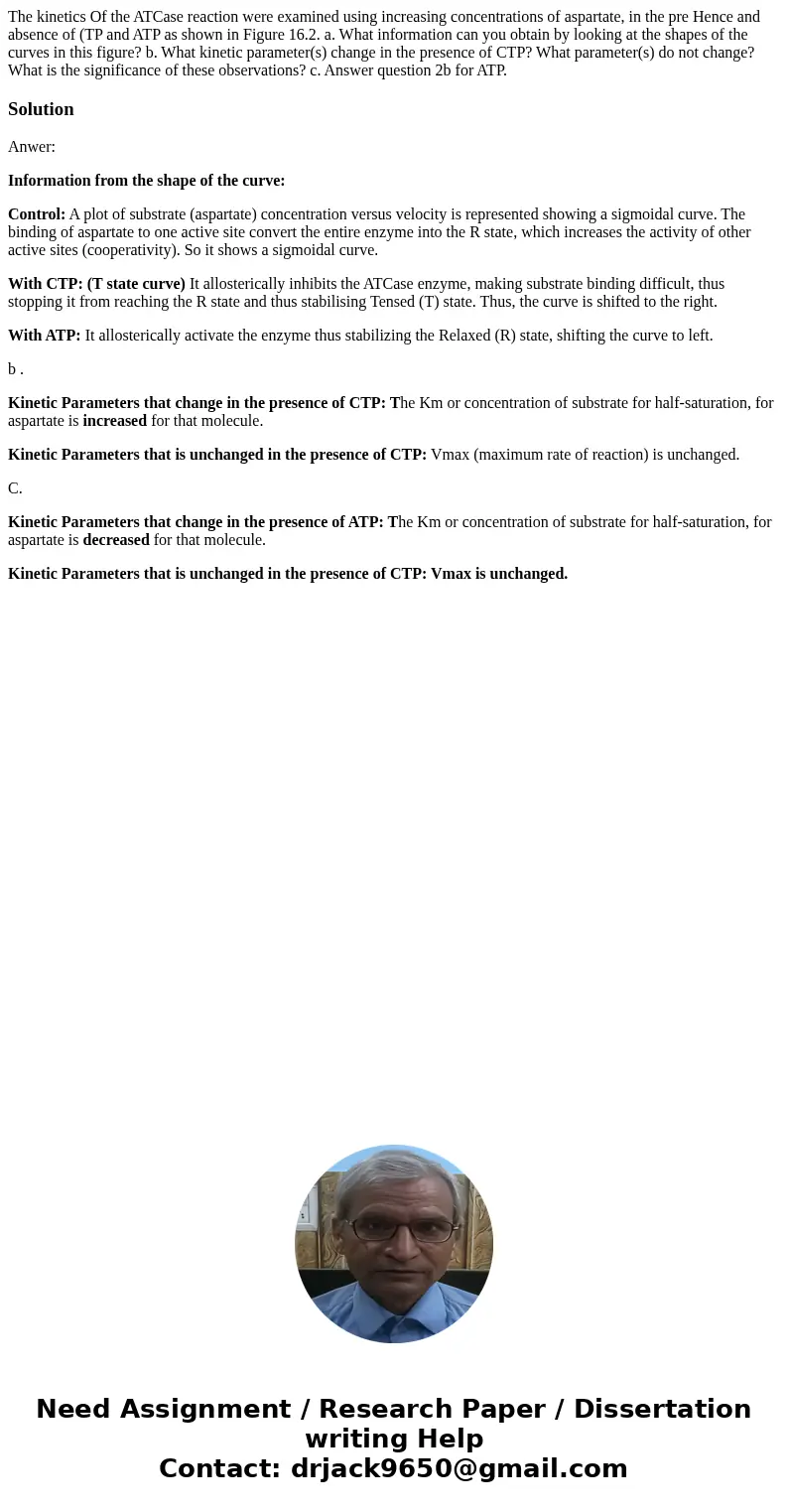The kinetics Of the ATCase reaction were examined using incr
Solution
Anwer:
Information from the shape of the curve:
Control: A plot of substrate (aspartate) concentration versus velocity is represented showing a sigmoidal curve. The binding of aspartate to one active site convert the entire enzyme into the R state, which increases the activity of other active sites (cooperativity). So it shows a sigmoidal curve.
With CTP: (T state curve) It allosterically inhibits the ATCase enzyme, making substrate binding difficult, thus stopping it from reaching the R state and thus stabilising Tensed (T) state. Thus, the curve is shifted to the right.
With ATP: It allosterically activate the enzyme thus stabilizing the Relaxed (R) state, shifting the curve to left.
b .
Kinetic Parameters that change in the presence of CTP: The Km or concentration of substrate for half-saturation, for aspartate is increased for that molecule.
Kinetic Parameters that is unchanged in the presence of CTP: Vmax (maximum rate of reaction) is unchanged.
C.
Kinetic Parameters that change in the presence of ATP: The Km or concentration of substrate for half-saturation, for aspartate is decreased for that molecule.
Kinetic Parameters that is unchanged in the presence of CTP: Vmax is unchanged.

 Homework Sourse
Homework Sourse